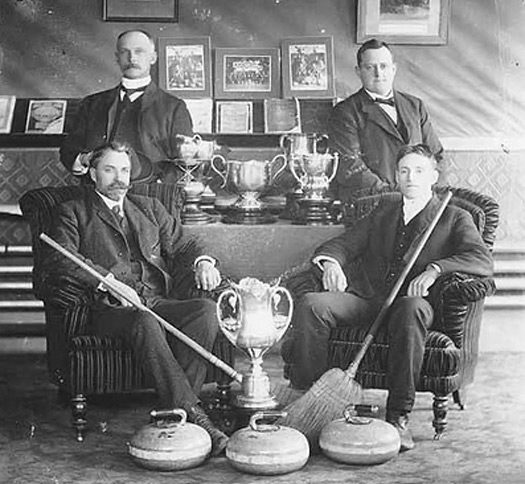
May 26, 2005
A Designer Remembers the Writer Guy Davenport

Photo: Ralph Eugene Meatyard portrait of Guy Davenport, 1966.
I seem to have misplaced the copy of my first letter to Guy Davenport — the American essayist, fiction writer, poet, translator, painter, illustrator, university scholar, and recipient of a MacArthur Foundation “genius award” — who died of lung cancer on January 4, 2005, at age 77. But I do have his very first answer to me, written (as its elegant typewritten heading reveals) on the birthday of Oswald Spengler on May 29, 1978.
That was 27 years ago, which means that Guy was fifty and a Distinguished Professor at the University of Kentucky in Lexington, while I was only 32 and teaching design and illustration at the University of Wisconsin-Milwaukee. Our long friendship, in part, speaks to one writer’s lifelong engagement with design, illustration and printing.
I had read his essay called “Post-Modern and After” in The Hudson Review (Spring 1978), which includes his mixed reactions to The Life of Fiction (1976), a book that I had co-produced with the literary scholar Jerome Klinkowitz.
Our book’s text consisted of comments by Klinkowitz, intermixed with snatches from writers of “postmodern” fiction (e.g., Hunter S. Thompson, Russell Banks and Kurt Vonnegut). At some point, the typescript was given to me, and I then made dozens of collages to “antagonize” the text, and designed the layout for the book. But the latter I did so ineptly that I still shiver slightly when I think about it. Always sensitive to typography, Guy complained in his essay that the book was “printed in blinding Telephone Book sans serif, with the lines twice as long as the one you are now reading (so that losing one’s place at line’s end adds to the frustration of paying attention to a text that has the organization of a vaudevillian’s scrapbook of notices and billings).”
Ouch! I surely must have felt when I first read that. But in the very next sentence, he not only restored my self-esteem, he elevated it. “Were it not for Roy Behrens’ splendid collages,” wrote Davenport, “(scuola di Max Ernst and worthy of that master), one would zing the book across the room as an impertinence, the equivalent of a mumbling lecturer who is having rough going with his notes.” In the face of such exuberance, how could I not respond to him?
A few years later, a title he gave to an essay was “Ernst Mach Max Ernst.” At all times in his letters, he had an irrepressible wit, by which I don’t mean humor (although he was wonderfully funny at times), but rather a gift for perceiving the most enlightening patterns. Indeed, whenever I think of him now, it almost always brings to mind a passage from Principles of Psychology, in which William James remarked that “some people are far more sensitive to resemblances, and far more ready to point out wherein they consist, than others are. They are the wits, the poets, the inventors, the scientific men, the practical geniuses. A native talent for perceiving analogies is reckoned…as the leading fact in genius in every order.”
At the time of his death, Davenport was the sole author or translator of exactly fifty published books (including pamphlets published by small presses), the first of which was published in 1963. But that does not start to take into account his hundreds of published articles and book reviews in a wide range of magazines (e.g., The New Criterion, Harper’s, Hudson Review), his inclusion in anthologies, and the essays that he was commissioned to write as parts of books by others. Davenport, wrote George Steiner, “is among the very few truly original, truly autonomous voices now audible in American letters.”
In addition to being a writer, Guy had drawn and painted since childhood (at age eleven, he had started an amateur newspaper in his hometown of Anderson, South Carolina, for which he wrote and also drew the pictures for all of the stories). As an adult, he used a crow quill pen to create the accompanying images for his own and the writings of others (I think the first of these I saw were in Hugh Kenner’s The Counterfeiters), in which he nearly always used a tedious method called “stippling” (still used today in scientific illustration), which is the “line art” equivalent of Georges Seurat’s pointillism.
The day before he wrote to me, Guy reported, he had labored for twelve hours on a stippled portrait of the composer Gioacchino Rossini (one square inch per hour, he claimed). Only recently had he taken up collage making, using “locomotives, cars, stamps, and things with lettering picked up on the street (and out of the laundry).” And, he added, it had been my collages in The Life of Fiction that had prompted him to try it out. It is evidence of his generosity and openness that he said in that very first letter to me: “I wish I could think of a way to collaborate with you.”
For more than a decade, Guy and I exchanged letters of a length of one or two pages, sometimes as often as weekly. I still have all the letters he sent, with copies of nearly all of mine. To correspond with him for so many years was among the wisest things I’ve done. Yet in truth it was always exhausting, since the intensity of his letters was forever a woeful reminder that I was writing not simply to an ordinary person but to a remarkably talented man whose powers of observation were astonishing at least. The muscles in my mind withstood a rigorous weekly workout throughout those years — in part because, being so junior to him, I felt as if I had to craft every sentence as precisely as possible. In sum, he taught me how to write by writing regularly to him.
With the arrival of each of his letters—and their extended reading (not unlike the lingering rate of enjoying a serving of ice cream) — he told me magnificent stories about Viktor Shklovsky, Thomas Merton, Marianne Moore, Ralph Eugene Meatyard, Eudora Welty, Louis Zukofsky, Charles Olson, Vladimir Tatlin, Pavel Tchelitchew, Balthus, the Shakers, Stan Brakhage, Louis Agassiz, Charles Fourier, Vladimir Nabokov, Michel de Montaigne, and innumerable others.
I recall that Guy was also linked with the American poet Ezra Pound, whose writings had been of interest to me since high school. Accused of treason after World War II, Pound was declared “mentally unfit,” and ordered to indefinite confinement at St. Elizabeth’s Hospital for the Criminally Insane in Washington D.C. He survived that Bosch-like limbo for a dozen years, until, in 1958 (at age 73), Pound was eventually discharged, and returned to live harmlessly (in silence and seclusion) in the mountains of Italy. Guy told me in his letters that he visited Pound “fairly regularly for 6 years,” beginning in 1952, and that it was he who “did the footwork and paperwork that got Ez out, and [I] have his letter of gratitude in my files.”
Beyond our letters, Guy and I collaborated on a couple of interesting projects. They were not essays, but experimental short stories, bewildering in their complexities, for which he did the writing while I made the illustrations. This all came about less than a year into our correspondence, and was triggered by my asking Robley Wilson, then editor of the North American Review, if he might like to feature a multi-page illustrated story by Davenport and Behrens, along with a full-color cover. Robley agreed, and a few months later Guy produced a story he had written with my work in mind.

The North American Review, June 1979.
Titled “Christ Preaching at the Henley Regatta,” his story was a tribute to the visionary British painter Stanley Spencer, who was born and raised in Cookham, a village on the River Thames. Guy’s title is a parody, since, when Spencer died in 1959, he was working on a painting (which remains unfinished) called Christ Preaching at the Cookham Regatta. It was typical of Spencer to portray an exalted and solemn event (such as the Sermon on the Mount) being held in a trivial setting (such as an annual boat race on the banks of the river). Perhaps the most famous example of this is an earlier painting by Spencer, titled The Resurrection, Cookham (c1927), in which lots of local folk (neatly dressed with hair intact) are shown as bursting from their graves and briskly springing back to life.
I really had enormous fun while illustrating what Guy and I referred to in our letters as CPATHR. Given free rein on the layout, I extended the text of his story to take up eight full pages, with each page also playing host to one of eight collages. Looking back, I am now disappointed with nearly all the inside collages, but I still love the full-color cover (a burlesque of Albrecht Dürer’s famous self-portrait in which he resembles Christ). So did Guy: “Your Christus with Coffee Pot and Primavera,” he wrote, “is a grand piece of work.”
In the meantime, Guy and I marched on. I was writing my first book on Art and Camouflage, teaching and illustrating. He was writing at a breakneck speed, yet also found time to write letters. Many of his translations, stories and essays were first published not by mainstream book publishers, but by small press “book art” publishers from the Private Press tradition, who typeset and hand-printed copies in limited editions. Among the many designers he worked with were Andrew Hoyem, Peter Koch, Barry Magid, Leslie Miller, Steve Miller, and Carol Sturm — a who’s who of contemporary American letterpress printers. There is also his friendship and many collaborations with Jonathan Williams of Jargon Society fame (who remembers Davenport here). His bibliography also includes two items he printed himself while a student at Harvard; one was a limited edition of Canto CX printed as a gift for Ezra Pound on the occasion of his eightieth birthday in 1965.
Today, if you look at a copy of Eclogues, you cannot help but notice that the book is dedicated “to Bonnie Jean.” She is Bonnie Jean Cox, who was Davenport’s loving companion for nearly forty years, and the person who shaped his memorial at the University of Kentucky on Saturday, May 8, 2005. It lasted about 90 minutes, and both began and ended with beautiful songs by the Shakers. “Every force evolves a form,” as Mother Lee and Guy would say, so a sweet gum tree was named for him, and a cluster of his closest friends aired their fondest memories of “the Hermit of Lexington,” as Jonathan Williams once called him, or “Dav,” as Ezra Pound preferred.
Among those who spoke that day was Erik Anderson Reece, a former student of Davenport who authored A Balance of Quinces (1996), the only book so far about Guy as a visual artist. Another speaker was Wendell Berry, the well-known essayist who taught at the University of Kentucky. He remembered that his and Guy’s offices were adjacent. “By walking a few steps and leaning on his doorjamb, and saying a word or two of greeting, I could start Guy decanting whatever happened to be on his mind,” said Berry. “But my metaphor is off. The flow started not from a decanter but from a stream, and somewhere upstream it was raining.”
* * * * *
Roy R. Behrens is a professor of art at the University of Northern Iowa, where he teaches graphic design, illustration and design history, art directs the North American Review, and edits Ballast Quarterly Review. His most recent books include FALSE COLORS: Art, Design and Modern Camouflage (2002), and COOK BOOK: Gertrude Stein, William Cook and Le Corbusier (2005). At the moment, he is working on a biography of the American artist and psychologist, Adelbert Ames II, titled The Man Who Made Distorted Rooms.
Copyright © 2005 by Roy R. Behrens
Observed
View all
Observed
By Roy Behrens
Related Posts

Equity Observer
Ellen McGirt|Essays
Gratitude? HARD PASS

Equity Observer
L’Oreal Thompson Payton|Essays
‘Misogynoir is a distraction’: Moya Bailey on why Kamala Harris (or any U.S. president) is not going to save us

Equity Observer
Ellen McGirt|Essays
I’m looking for a dad in finance

She the People
Aimee Allison|Audio
She the People with Aimee Allison, a new podcast from Design Observer
Recent Posts
‘The creativity just blooms’: “Sing Sing” production designer Ruta Kiskyte on making art with formerly incarcerated cast in a decommissioned prison ‘The American public needs us now more than ever’: Government designers steel for regime change Gratitude? HARD PASSL’Oreal Thompson Payton|Interviews
Cheryl Durst on design, diversity, and defining her own pathRelated Posts

Equity Observer
Ellen McGirt|Essays
Gratitude? HARD PASS

Equity Observer
L’Oreal Thompson Payton|Essays
‘Misogynoir is a distraction’: Moya Bailey on why Kamala Harris (or any U.S. president) is not going to save us

Equity Observer
Ellen McGirt|Essays
I’m looking for a dad in finance

She the People
Aimee Allison|Audio
